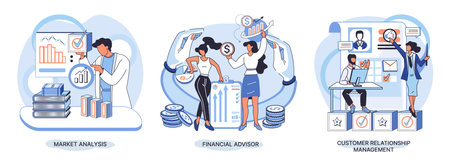Understanding Estimated Taxes in the U.S.
If you’re a digital nomad or remote worker living and earning income in the United States, understanding estimated taxes is crucial for staying compliant with the IRS and avoiding unexpected penalties. The U.S. operates on a pay-as-you-go tax system, which means taxes are due as income is earned—not just when you file your annual return. For many remote workers and freelancers who don’t have taxes automatically withheld from their paychecks, this means making quarterly estimated tax payments throughout the year.
Who Needs to Pay Estimated Taxes?
Anyone who expects to owe at least $1,000 in federal income tax after subtracting withholding and credits is generally required to make estimated tax payments. This typically includes self-employed individuals, freelancers, gig economy workers, and entrepreneurs—making it highly relevant for digital nomads and remote professionals whose clients may be located anywhere in the world. If you receive income that isn’t subject to automatic withholding (like contract work, consulting fees, rental income, or investment earnings), estimated tax payments are your responsibility.
Why Estimated Taxes Matter for Digital Nomads
For digital nomads and remote workers, managing taxes can be especially tricky because your work location may change frequently, and your income sources can vary month-to-month. Failing to pay enough estimated tax throughout the year can result in IRS penalties and interest charges—even if you pay everything owed by the filing deadline. Staying on top of estimated taxes helps ensure you avoid surprises at tax time and maintain financial stability while enjoying the freedom of working remotely across the U.S.
2. Who Qualifies as a Digital Nomad or Remote Worker
Understanding who qualifies as a digital nomad or remote worker is crucial for determining your estimated tax obligations in the United States. The IRS does not specifically define “digital nomad,” but tax law focuses on where and how you earn income, and your residency status. Let’s break down these categories to clarify your responsibilities.
Defining Digital Nomads and Remote Workers Under U.S. Tax Law
Digital Nomads: Generally, digital nomads are individuals who use technology to perform their jobs remotely while traveling or living in different locations, often outside their home country. If you are a U.S. citizen or resident alien working from abroad, the IRS still considers you subject to U.S. tax laws on your worldwide income.
Remote Workers: Remote workers typically have an agreement with an employer that allows them to work outside of a traditional office setting—this could be from home or any other location, including across state lines within the U.S.
How Your Work Situation Affects Tax Responsibilities
| Status | Location of Work | Main Tax Consideration |
|---|---|---|
| U.S. Citizen/Resident Digital Nomad | Abroad (outside U.S.) | Worldwide income taxable by IRS; may qualify for Foreign Earned Income Exclusion (FEIE) |
| U.S. Citizen/Resident Remote Worker | Within U.S., different state than employer | May owe state taxes in both work and residence states (“double taxation” risk) |
| Nonresident Alien | Inside U.S. | Taxed only on U.S.-sourced income; different filing requirements apply |
Key Takeaway:
If you are a U.S. citizen or green card holder, your global earnings are reportable to the IRS regardless of where you live or travel. Remote workers within the U.S. must navigate both federal and sometimes multiple state tax laws based on their work arrangement and location.

3. Calculating Your Estimated Taxes
If you’re a digital nomad or remote worker in the United States, figuring out your estimated taxes can feel overwhelming. Here’s a clear, step-by-step guide to help you get it right and avoid unexpected tax bills.
Step 1: Identify All Sources of Income
First, gather all your income streams. This could include freelance gigs, contract work, side hustles, investment income, and even rental income if you have properties back home. Make sure you include payments received from both U.S.-based and international clients, as the IRS requires U.S. citizens and residents to report worldwide income.
Step 2: Calculate Allowable Deductions
Next, determine what business expenses you can deduct. Common deductions for digital nomads and remote workers include:
- Home office expenses (even if your “office” is a co-working space or a dedicated area in your Airbnb)
- Travel costs related to business (flights, lodging, meals while traveling for work)
- Internet and phone bills used for work
- Equipment and software subscriptions
- Health insurance premiums if self-employed
Step 3: Estimate Your Taxable Income
Subtract your allowable deductions from your total income to get your taxable income. It’s smart to keep organized records and receipts throughout the year; this makes quarterly estimates much easier and ensures you don’t miss out on valuable write-offs.
Step 4: Understand Payment Thresholds
The IRS expects you to pay estimated taxes if you expect to owe at least $1,000 in tax after subtracting withholding and refundable credits. Most freelancers and remote workers fall into this category because taxes aren’t automatically withheld from their paychecks. Use IRS Form 1040-ES to calculate how much you should pay each quarter based on your projected annual income.
Avoid Penalties with On-Time Payments
Estimated taxes are due four times a year—usually in April, June, September, and January. Mark these dates on your calendar so you don’t miss a deadline. Paying late or underpaying can result in IRS penalties and interest charges.
Quick Tip: Stay Flexible
Your income might fluctuate month-to-month, especially if you work with multiple clients or take time off for travel. Revisit your estimates each quarter and adjust payments up or down as needed to reflect your actual earnings.
4. How and When to Pay Estimated Taxes
If you’re a digital nomad or remote worker based in—or earning income from—the United States, understanding how and when to pay estimated taxes is crucial for staying compliant and avoiding penalties. Here’s a straightforward guide to help you navigate the process.
Estimated Tax Payment Deadlines
The IRS requires that you pay estimated taxes quarterly if you expect to owe at least $1,000 in tax after subtracting withholding and credits. The payment schedule is:
| Quarter | Income Period | Payment Due Date |
|---|---|---|
| Q1 | January 1 – March 31 | April 15 (or next business day) |
| Q2 | April 1 – May 31 | June 15 (or next business day) |
| Q3 | June 1 – August 31 | September 15 (or next business day) |
| Q4 | September 1 – December 31 | January 15 of following year (or next business day) |
IRS Online Tools for Easy Payments
The IRS offers several online tools to make paying estimated taxes simple, wherever you are:
- IRS Direct Pay: Pay directly from your bank account without fees. Visit IRS Direct Pay
- EFTPS (Electronic Federal Tax Payment System): Set up recurring payments and track your payment history. Registration required. Sign up for EFTPS
- IRS2Go App: Make payments, check your balance, and receive reminders on your mobile device.
- Third-Party Payment Processors: Use credit/debit cards for a fee through approved IRS partners.
Practical Payment Tips for Remote Workers & Digital Nomads
- Automate Your Payments: Use EFTPS or your bank’s bill-pay feature to schedule payments in advance so you never miss a deadline—even if you’re traveling or working abroad.
- Track Your Income Regularly: Since freelance and remote work income can fluctuate, review your earnings each month to avoid underpayment surprises at tax time.
- Email Reminders: Set calendar alerts for all four IRS due dates so quarterly deadlines don’t sneak up on you.
- If You Overpay or Underpay: You can adjust future payments as needed—just be sure to reconcile everything when you file your annual tax return (Form 1040).
- If You Miss a Deadline: Make the payment as soon as possible to minimize interest and penalties. The IRS charges these based on how late the payment is.
- If Working Abroad: U.S. citizens must report worldwide income. Use secure Wi-Fi and trusted devices when accessing IRS tools overseas.
Your Action Plan for Stress-Free Estimated Taxes
Stay proactive: Mark your calendar with key dates, use IRS online services to keep things streamlined, and review your finances every quarter. Paying estimated taxes doesn’t have to be stressful—even when your office is anywhere the Wi-Fi works!
5. Common Mistakes Digital Nomads Make
When it comes to estimated taxes, digital nomads and remote workers in the United States often fall into several traps that can lead to unexpected tax bills or even penalties. Understanding these frequent errors is crucial for staying compliant and financially secure.
Overlooking State Tax Obligations
One of the most common mistakes is forgetting about state tax requirements. Even if you spend most of your year abroad or traveling between states, your “domicile” or permanent residence can trigger state income tax liabilities. Some states, like California and New York, are particularly aggressive about taxing former residents who haven’t properly severed their ties. Be sure to clarify your residency status and file accordingly.
Misreporting International Income
Many remote workers assume that foreign-earned income isn’t subject to U.S. taxes, but this is a costly misconception. As a U.S. citizen or resident alien, you must report your worldwide income to the IRS. While you might qualify for exclusions or credits (like the Foreign Earned Income Exclusion), failing to disclose all sources can flag your return for an audit.
Ignoring Self-Employment Tax
If you’re freelancing or running your own business remotely, you’re responsible for self-employment tax in addition to income tax. This covers Social Security and Medicare contributions, which aren’t withheld by foreign employers or clients. Many digital nomads forget to account for this extra obligation in their quarterly estimated payments.
Poor Record-Keeping
Without proper documentation of expenses, travel days, and foreign income, it’s nearly impossible to accurately calculate your estimated taxes. Inconsistent record-keeping makes it difficult to substantiate deductions or prove eligibility for exclusions should the IRS inquire.
Missing Deadlines
The IRS requires quarterly estimated tax payments from anyone who expects to owe at least $1,000 in taxes for the year after subtracting withholding and credits. Missing these deadlines can result in penalties—even if you file an extension later on.
Avoiding these pitfalls requires vigilance, organization, and a clear understanding of both federal and state tax rules as they apply to your unique situation as a digital nomad or remote worker in the United States.
6. Staying Organized and Seeking Pro Help
When it comes to estimated taxes, digital nomads and remote workers in the United States can’t afford to let things slide. Staying organized is your best friend—think of it as your financial safety net.
Tips for Keeping Records
- Track every dollar: Maintain a detailed record of all income sources, including freelance gigs, remote employment, and side hustles.
- Save those receipts: Deductible expenses like coworking fees, travel costs, software subscriptions, and even a portion of your rent (if you qualify for the home office deduction) should be documented and stored digitally or physically.
- Create a system: Whether you use folders in Google Drive or an old-school filing cabinet, consistency is key to avoiding last-minute panic when tax time rolls around.
Using Apps and Technology
- Leverage apps: Tools like QuickBooks Self-Employed, FreshBooks, or Expensify are tailored for freelancers and remote workers. These apps help track income, automate expense categorization, and even estimate quarterly payments.
- Set reminders: Use calendar apps to remind yourself about quarterly tax deadlines so you never miss a payment and avoid unnecessary penalties.
Knowing When to Consult a U.S. Tax Professional
- If you’re juggling multiple income streams across state lines or internationally, the tax rules get complicated fast. A U.S.-based tax professional can help ensure you’re compliant with both federal and state requirements.
- If you’re unsure about which deductions apply to your unique situation—like travel expenses while working abroad or business-related purchases—a professional can help maximize your savings.
- If you’ve missed estimated tax payments or received IRS notices, don’t try to DIY. Consulting a pro can save you time, money, and stress in the long run.
The Bottom Line
The freedom that comes with remote work is awesome—but so is the responsibility of managing your own taxes. Stay organized, make the most of tech tools, and don’t hesitate to call in expert help when things get tricky. Your future self (and wallet) will thank you.


